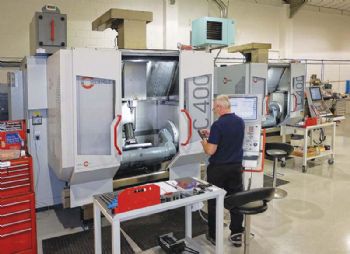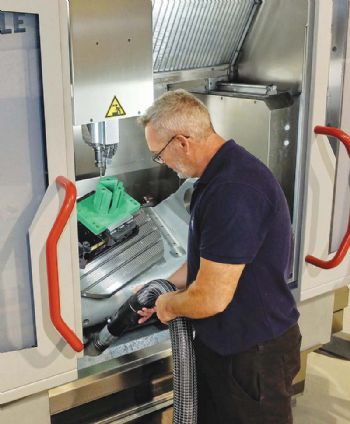
Founded in 2003 by John Biddlecombe and Simon Kingdon-Butcher, Global Technologies Racing (GTR) is leading manufacturer of laminated carbon-fibre components for the motor-sport sector in the UK, supplying most of the Formula One teams.
Metallic materials are also machined, and the components produced are to be found in all parts of a racing car — chassis, transmission and engine.
Moreover, the company caters for everything from concept and design through patterns and moulds to complete assemblies.
Before starting the sub-contract machining firm, the two directors owned G Force, which designed and built racing cars for various motor-sport series; these included IndyCar, Formula Nippon and Le Mans Prototype sports cars.
Another notable success was the construction of Thrust SSC, which holds the current land speed record of 763mph (set on 15 October 1997).
Over the last 15 years, GTR has become so successful that the constantly rising demand on its machine shop in Fontwell, West Sussex, meant that at the beginning of 2018 it needed to expand into a second facility in nearby Bognor Regis.
Shortly after moving in, two Hermle C 400 machining centres were ordered from the Gosport-based UK agent Kingsbury (
www.kingsburyuk.com) to boost the sub-contract machinist’s five-axis machining capability.
‘Wet and dry’
The first of these Hurco machines — with a coolant tank for ‘wet’ machining and an additional 50-pocket tool magazine to supplement the standard 38 cutters — was delivered in mid-2018.
It was followed in February 2019 by a second model; this featured dust extraction for the ‘dry’ machining of composite materials (without coolant).
Both machines have a trunnion-mounted table that provides the fourth and fifth CNC axes.

Mr Kingdon-Butcher said: “Wherever possible, we avoid wet cutting carbon fibre, but some of the components produced at our Fontwell factory have aluminium or titanium inserts within their structure.
“In those cases, we have to cut in the presence of coolant to avoid the heat that would be generated if we were to machine metals without coolant.
“This ensures that the structural properties of the adjacent areas of composite are not affected.”
Although 95% of ISO 9001:2008- and AS 9100-approved GTR’s turnover is derived from motor-sport projects, there is a growing need to machine metallic parts for road-going super-cars, as well as for other industrial sectors such as defence, aerospace, medical and offshore.
The Hermle machining centre with coolant is used to fulfil those contracts, with the often complex parts benefitting from its fully interpolative five-axis contouring capability.
Alternatively, the ability to reposition and clamp one or two rotary axes in-cycle for less complex four- and three-axis cycles leads to reduced fixturing costs, fewer component set-ups and better accuracy.
External extraction
The ‘dry’ machining centre, which is preferred for producing most of the carbon-fibre parts, is linked to a Hermle-built external extraction unit by a large-diameter flexible hose that is normally connected to a port on the side of the guarding, so that composite dust generated during machining is continuously sucked away from the working area.
However, to deal with residual dust that can collect inside the machine, the operator can remove the hose nozzle from its mount and use it as a portable vacuum to clean the machine base, trunnion table and other surfaces.
Tolerances down to ±0.01mm have to be held; and while this is commonplace when machining metals, achieving such tolerances on carbon-fibre parts is challenging.

GT says success in this area is down to a combination of its long experience working with composites and the rigidity of the Hermle machines; this rigidity avoids the generation of harmonics when trimming thin carbon-fibre sections.
Thin-wall structures are needed to minimise weight in racing cars, super-cars and aircraft, but edges must be nearly perfect to avoid stress fractures, so vibration when using the mainly poly-crystalline diamond cutters cannot be tolerated.
When GTR moved into its new Bognor Regis premises, in so doing it took over another sub-contractor supplying the motor-sport sector and inherited a number of machine tools — including a nine-year-old Hermle B 300 five-axis machining centre.
Mr Kingdon-Butcher said: “The performance and reliability of this machine played a part in our decision to purchase two new models of the same make, despite having used five-axis machining centres from other suppliers for many years.
“Hermle machines have a good reputation in the market, and our machine shop manager — Martin Sammut — was familiar with the brand.
“We cultivate strong and lasting trading relationships with our customers, maintaining close communication, competitive pricing, rapid response and timely deliveries, and we look for similar associations with our machine suppliers.
“We have found this with Kingsbury.”